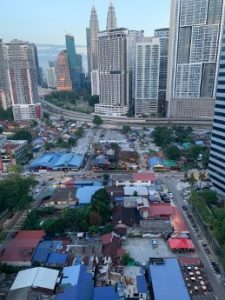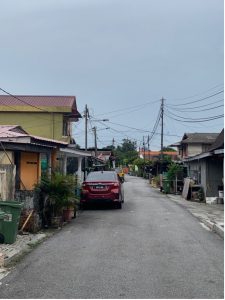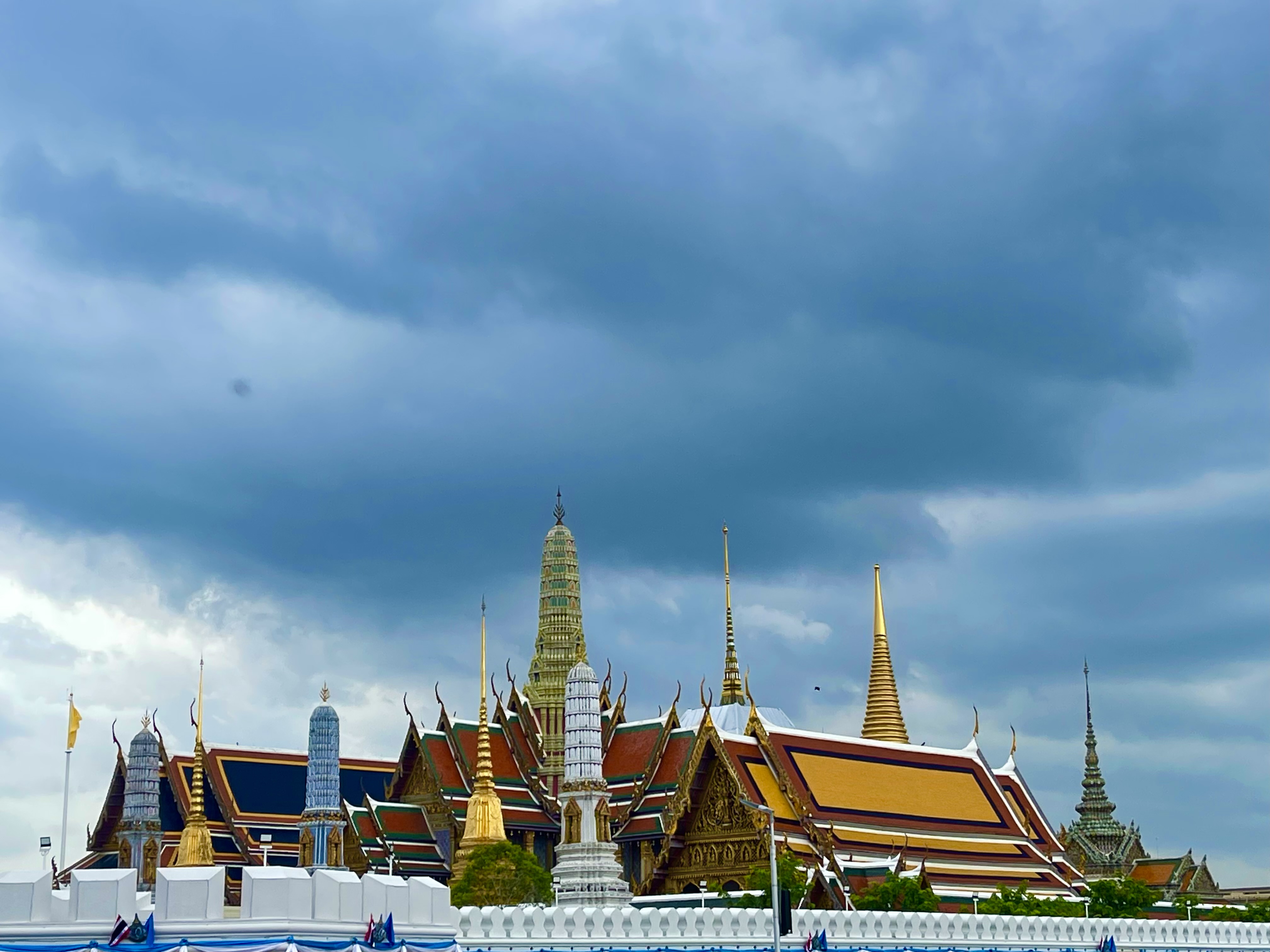Kampong Bharu is the last Malay enclave in the city centre of Kuala Lumpur. Its residents have fiercely resisted urban redevelopment, driven by concerns over inadequate compensation and potential gentrification. Therefore, amidst Kuala Lumpur’s modernisation, this enclave remains untouched. However, prolonged discussions and inconsistent government policies have instilled a profound sense of insecurity and symbolic dispossession among its inhabitants, challenging their cultural identity and community bonds, writes Jiajun Deng
_______________________________________________
Kampong Bharu is the last remaining Malay village in the centre of Kuala Lumpur, thus it is known as the “last Malay enclave”. Kuala Lumpur City Hall (Dewan Bandaraya Kuala Lumpur, DBKL) has had plans to develop Kampong Bharu since the 1990s, but these plans have not been realised due to the special nature of its land tenure and resistance from residents. Although residents have not experienced physical dispossession as a result of displacement, they have still been subjected to other forms of dispossession and displacement during the prolonged discussions on redevelopment and the urban renewal of the surrounding neighbourhood.
With the support of the Dissertation Fieldwork Grant, I conducted fieldwork in Kampong Bharu this year. Amidst the towering skyscrapers of Kuala Lumpur, Kampong Bharu stands out as a tranquil oasis, a haven for urban Malays seeking respite from the concrete jungle. Life here retains its hustle and bustle, but with an added touch of cherished authenticity and warmth. As I savored the genuine taste of nasi lemak and ikan bakar, I reveled in the paradox of a laid-back life in the heart of the city. Yet, I also couldn’t help but resonate with the residents of Kampong Bharu, feeling the pressure of being encircled by high-rises and the accompanying sense of insecurity they face.
Brief history of Kampong Bharu
The first record of Kampong Bharu appeared in 1899. It was designed as a Malay Agricultural Settlement (M.A.S.) with the aim of concentrating on the low-income Malay community and providing better educational conditions for their children. Kampong Bharu consisted of seven small villages with divisions of a colonial character, and the inhabitants who lived in the same village often came from the same ancestral origin. For example, most of the residents in Kampung Pindah were Javanese immigrants, and the residents in Kampung Periok are mostly Malacca immigrants. The land in M.A.S. was designed to be cultivated and inhabited by Malays, with non-Malays prohibited from residing in the M.A.S. area. Four settlements were also developed in the outskirts of the M.A.S. These settlements were designed for commercial use and there were no ethnic restrictions on their use.
The major difference between Kampong Bharu as an urban village and a squatter settlement is the possession of land tenure. This ensures that the residents of Kampong Bharu possess a heightened level of agency and negotiating leverage during urban redevelopment, shielding them from involuntary relocation. In addition, the M.A.S. area, which is exclusively inhabited by Malays, forms a purely Malay enclave and has become a community of ‘Malayness’. As such, it is also considered a tangible Malay cultural heritage. In the Kampong Bharu Concept Plan (KBCP), Kampong Bharu is also designed as a future Malay cultural heritage park.
Following the implementation of the Klang River diversion project, Kampong Bharu was frequently affected by floods in the mid to late 20th century, causing its living conditions to deteriorate. These poor living conditions have caused many people to move out of Kampong Bharu and rent out their houses to Malays from rural areas and Indonesia. Simultaneously, both DBKL and the Selangor State Development Corporation (Perbadanan Kemajuan Negeri Selangor, PKNS) intended to transform Kampong Bharu into a contemporary, upscale urban locality. However, this development programme has not been successful. On the one hand, many of the landowners who used to live in Kampong Bharu have passed away and their land titles are difficult to ascertain and take a long time to be clarified. On the other hand, there have been strong protests from the landowners and residents of Kampong Bharu. For these reasons, Kampong Bharu’s regeneration programme has been stalled, and as of 2023, Kampong Bharu has retained its traditional urban façade.
Opposition to urban renewal projects
Residents are not in favour of the development project in Kampong Bharu. In order to find out the reasons for their opposition, I interviewed some of the residents and watched a seminar on the future development of Kampong Bharu through livestreaming. From their words, I summarised the following reasons.
Firstly, the government’s compensation for redevelopment does not satisfy the residents. While the acquisition price of land in the neighbouring areas is already as high as 4,000 ringgit per square foot, the government’s offer for land in Kampong Bharu in 2019 is only 850 ringgit per square foot. Such an offer is considered very unreasonable. One villager had this to say:
“…the 850 ringgit offer is really ridiculous. Look at the houses in Chow Kit, look at the houses in Bukit Nanas, we are landowners in the heart of the centre of Malaysia, and yet they are dismissing us like squatters! Would they dare to offer such low prices if this was not a Malay village but a Chinese village …”
Government officials also expressed very different views. Since Kampung Bharu is a Malay reserve land, it cannot be bought and sold freely in the market. This means that despite its location in the centre of Kuala Lumpur, there is no way for the land to fetch the high market value that neighboring plots might command. Therefore, government officials consider the price to be “very reasonable”.
Secondly, out of concern for privatisation, residents fear that property prices in the renewed Kampong Bharu would rise sharply and that they might not be able to afford to purchase properties in the area. Residents have such concerns mostly because they are informed by the gentrification of the neighbourhood. Since there are no land tenure concerns for commercial sites, the areas around Kampong Bharu have gone through a transformation into high-rise unit housing. These high-rise housing units in the city centre have extremely high property prices, in contrast to the low-cost and small bungalows in Kampong Bharu.
At the same time, these high-rise housing estates have also become home to many non-Malay people, making many Kampong Bharu villagers feel “threatened”. The fear of losing Malay culture is another reason why the residents are reluctant to accept the redevelopment plan. Although the government has emphasised in the development plan that the area will remain exclusively Malay, the developers may sell the houses to non-Malays when the houses become unaffordable to Malays and thus remain unsold. In the context of privatisation, government planning is no longer the golden rule, and when developers put pressure on the government, officials may not make decisions that Malays can rely on to protect their interests.

Concerns about the government have also naturally arisen. Kampong Bharu villagers’ distrust of the government actually stems from the frequent changes of plans when communicating about redevelopment matters as well as their incompetence in developing nearby areas, which have left Kampong Bharu villagers with very low expectations. In the development of Kampung Sungai Baru, the government offered a land tenure price that was far lower than even that offered in the M.A.S. area, even though the redevelopment of this commercial area was not subject to Malay captive land tenure. At the same time, the delay in the development project has caused some of the villagers of Kampung Sungai Baru to remain in longhouses and experience long periods of displacement. On the other hand, in preliminary discussions of the development of Kampong Bharu, the government changed its offer for the land again and again, even changing the acquisition proposal that the land would be leased. The government’s incompetence in development planning has left the residents of Kampong Bharu frustrated about the future of their village.
Living with a sense of insecurity
The prolonged discussions about the reconstruction of Kampong Bharu have been physically and mentally exhausting for its residents and have in fact led to a form of symbolic dispossession. Multiple social factors have created a sense of ‘insecurity’ for them, resulting in the residents feeling displaced even while remaining physically in place.
The greatest sense of insecurity comes from the government’s response to development plans. On the one hand, the government’s repeated policy changes have left residents living in a state of perpetual uncertainty. One villager said that his greatest hope for the development plan is that it would be finalised quickly, for he is tired of “looking at the news and thinking about how to refute the government’s proposals”. On the other hand, the government broadcasts the consent signing rate for the development plans through news and announcements during the signing stage, which results in anxiety among residents who have not yet signed.
Secondly, this sense of insecurity also comes from the government’s reclaiming of power. In 2020, the government announced that the M.A.S. Board had reclaimed its authority over the management of Kampong Bharu and would no longer be responsible for any town planning matters. All urban planning matters were transferred to the DBKL to handle. This has caused a sense of apprehension amongst the residents. Some residents have been worried that the withdrawal of power over the M.A.S. Board might mean that the government would evict them in the future through mandatory resettlement, or even revoke the privileges of M.A.S. as a Malay reserve land outright.
At the same time, the gentrification of the neighbourhood has also affected the residents, with a sense of insecurity that is experienced on both ethnic and economic levels. On the one hand, residents are worried that the increasing number of non-Malays living around Kampong Bharu would pose a threat to the character of M.A.S. These non-Malays living in high-rise housing are mostly higher-income, well-educated people who fulfil DBKL’s expectations of its residents in a modern city. Residents of Kampong Bharu are concerned that DBKL will continue to encroach on the fringes of M.A.S. in order to bring in more talent and ultimately turn Kampong Bharu into a generic, high-rise residential neighbourhood. On the other hand, gentrification has also led to an upgrading of consumption by residents living nearby, with more and more people in the surrounding areas choosing to consume in upmarket restaurants, shops, and shopping malls. This may result in a negative impact on Kampong Bharu’s economy, as most of the businesses in Kampong Bharu are currently running small, inexpensive businesses.

Lastly, the social situation in Kampong Bharu also greatly affects the sense of insecurity of the residents. More and more residents are choosing to move out and rent out their houses due to the living conditions in the area. Those who rent, however, are generally from rural areas and Indonesia and are only using the house as a short-term accommodation option. Those who have not moved out are still living in the same place, but due to frequent turnover in neighbours, they are less and less able to establish long-term connections within the community. One villager put it this way:
“New neighbours coming everyday…they speak Malay…or Indonesian, often with an accent that I don’t quite understand…We don’t seem to be very much alike in terms of our habits either, and sometimes it feels like we don’t have much in common. Most of all, they always leave after a short period of time, and when we just get well with each other, it’s time to say goodbye.”
This short-term and somewhat disconnected community relationship has led to more and more neighbours becoming more and more alienated, making them feel less and less a sense of belonging to the community, which has slowly evolved into a sense of insecurity.
What has caused the sense of insecurity?
The sources of this sense of insecurity are related to privatisation, state redistribution and crisis management and manipulation. The impact of privatisation is the most direct, with the gentrification of peripheral areas and the loss of Malay identity in villages after urban renewal. Crisis management is mainly through the government’s announcement of consent signing rate for the development plans. This practice creates a crisis in which ‘reconstruction plans will be impeded’’. The government arranges the way the crisis unfolds by disclosing the rate of consent signatures, and shifts the responsibility for the crisis to those citizens who have not signed up, thus creating a sense of insecurity among them. Furthermore, in the case of Kampong Bharu, although there is no direct manifestation of state redistribution, the upward movement of land and business resources in the process of redistributing land resources to developers in the surrounding area has indirectly dispossessed the residents of Kampong Bharu.
The trend of Malayisation also has an impact on the sense of insecurity, mainly in the construction of social relations. With the awakening of Malay nationalism, the debate over the definition of ‘malayness’, i.e. who could be called a Malay, emerged after independence. Since non-native Malays are ethnic Malays, speak Malay, and practise Islam, they are defined as having Malayness and can be called Malays. Therefore, after the 1970 census, they were all classified under the racial category of ‘Malays’. The widening of the definition of Malays has given more foreign labourers the opportunity to live in Kampong Bharu, which to some extent has led to a widening of the differences in the cultural backgrounds of Kampong Bharu’s inhabitants and has been one of the causes of social alienation.
In conclusion, Kampong Bharu stands at the crossroads of urban renewal and dispossession, embodying the challenges and vulnerabilities faced by traditional enclaves in rapidly modernising cities. This “last Malay enclave” in Kuala Lumpur is a stark reflection of the sense of insecurity that arise when long-term forms of livelihoods and social relations meets the tidal wave of urbanisation. The longstanding residents, while rooted in their ancestral land, feel the tremors of uncertainty as the cityscape around them transforms. This enclave, with its rich history and cultural significance, serves as a poignant reminder of the costs of urban progress. The sense of insecurity, amplified by shifting governmental stances, rising external pressures, and the internal fears of cultural erosion, underscores the need for a more compassionate and inclusive approach to urban planning. As we envision the future of cities like Kuala Lumpur, it’s essential to ensure that voices from places like Kampong Bharu are not just heard but resonate in the corridors of decision-making.
______________________________________________
*Banner photo by and copyright of the Author.
*About the research:This blog post is based on the author’s LSE MSc dissertation research, which was supported by the Southeast Asia Student Dissertation Fieldwork Grant.
*The views expressed in the blog are those of the authors alone. They do not reflect the position of the Saw Swee Hock Southeast Asia Centre, nor that of the London School of Economics and Political Science.





